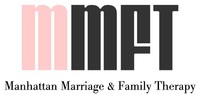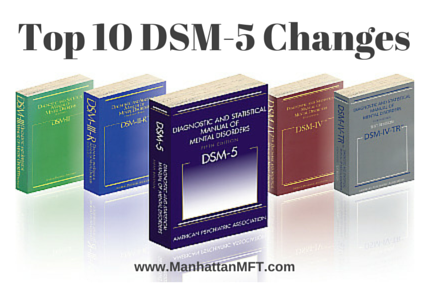|
10. No More multiaxial asessment. The multiaxial assessment came in with DSM-3 and out with DSM-5.
9. Many of the symptom descriptions have been expanded to be more clear and specific. Look at Posttraumatic Stress Disorder for a great example. The more detailed information will allow clinicians to diagnose more accurately. 8. No More GAF. It appears they were too subjective and not a consistent measure across the country. Instead there is now a severity indicator (mild, moderate, severe, extreme/profound). 7. Significant chapter title changes:
6. Added disorder names include:
5. NOS diagnoses are now either Other-specified or Unspecified. Unspecified diagnosis indicates significant distress unclear in origin, and there is insufficient information to make a more specific diagnosis. Other- specified is used similarly to Unspecified only there is more diagnostic information (recurrent brief depression or short-duration depressive episode). 4. International Classification of Disease (ICD) 10 codes are included at the top left of each diagnosis. 3. Autism is now a spectrum disorder which includes symptoms typically associated with Asperger’s, Pervasive Developmental Disorders, Child Disintegrative Disorder and Retts. Symptoms are recorded based on severity and specifiers. 2. With ADHD, symptoms are present before 12 years old rather than 7 years old. 1. Substance abuse and dependence disorders have been replaced with a continuum model. Previous abuse and dependent diagnoses guidelines were limited and did not allow for a clear way to record symptoms. Now a patient must present 2 of 11 symptoms and the therapist must use Disorder severity scale from mild to severe. DSM-5 is the 6th Manual to be published. The first DSM was published in 1952 with 106 disorders. The DSM-IV-TR from 2000 includes 297 disorders. Disclaimer: This information should not be used for diagnostic purposes. Visit DSM-5 for more details. Like this blog? Would you like to get future posts delivered straight to your inbox? Sign up for our e-mail list to get the latest.
0 Comments
|
Downtown Darien, 1051 Boston Post Road Suite 1, Darien, CT 06820
[email protected]
[email protected]
© COPYRIGHT 2015. ALL RIGHTS RESERVED.


 RSS Feed
RSS Feed